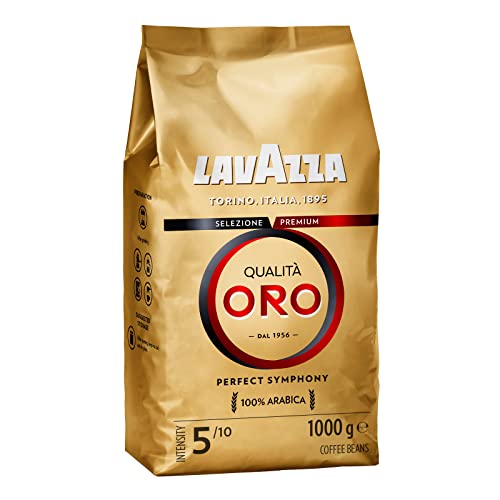5 Laws That Can Help The Types Of Coffee Beans Industry

Types of Coffee Beans
Behind every cup of coffee we sip there are beans that have been carefully graded. The beans are graded based on the size, color and shape.
The AA grade is assigned to coffee beans that satisfy all of the above criteria, but they should not contain more than three deficient qualities (quakers). Typically these are Kenya AA beans.
Arabica
Arabica coffee beans are also referred to as Coffea Arabicica and are the most popular coffee in the world. Legend has it that coffee was discovered in Ethiopia when a goat herder noticed his herd's dancing more vigorously after eating the fruit of the coffee plant. This led him to experiment with roasting the seeds and brewing them, making the drink that we love today.
Although a variety of coffee plants are available There are only two primary species used as the base for all our favorite coffees: robusta and arabica. The taste of the final beverage is typically better with the earlier.
There are many different arabica cultivars. Each one has its own distinct taste profile. Typica and Bourbon are two of the most well-known arabica cultivars. All other arabica varieties were developed from these two varieties either through natural mutations, or intentional crossbreeding. Scott Labs developed the SL28 cultivar in Kenya, which is known for its distinct chocolaty flavor.
The flavor of an arabica variety is based on the conditions under the conditions it was cultivated, and also how it was handled and roasted. For instance, the kind of shade a tree receives along with its altitude and soil composition may all play an important part in the final flavor.

Robusta
Robusta coffee beans, also known as coffee canephora are the second most used variety of coffee. coffee beans bristol are the beans used to make most instant coffees and have twice as much caffeine as Arabica Coffee Beans. They are also utilized in many espresso blends, especially for caffe latte and cappuccino.
The Coffea Canephora plant originated in Sub-Saharan Africa, but it has since been cultivated around the world. It is able to grow at lower altitudes and can withstand higher temperatures than the Arabica coffee plant, which makes it a much more practical crop for farmers. Vietnam is currently the largest producer of robusta coffee followed by Brazil and Indonesia.
While the robusta coffee plant has its benefits However, it's not adored by cupping enthusiasts for its bitter taste and burnt rubber notes. Many large coffee companies employ arabica bean for their premium coffees because it is considered a lower-quality coffee.
The demand for specialty coffees is growing, and small roasters are experimenting to benefit from its superior qualities. Our Valhalla Java and Death With Coffee are two examples of outstanding robusta coffees that are blended with arabica for the perfect balance of flavour and strength. These beans are from Uganda which is a country in which robusta has been cultivated for a long time. You can read more about them here.
Liberica
Liberica coffee beans are an uncommon variety that is rarely used in the world. They're less than 2% the world's consumption of coffee beans, and are often overlooked as they don't contain as much caffeine. These beans have a distinct taste that a majority of coffee drinkers find irresistible.
Liberica coffee beans, though extremely scarce they are still very popular in a few regions of Asia. These beans are most common in Malaysia and Indonesia where there is a huge Muslim community. In these countries the coffee industry has been strong for many years. Drinking a cup coffee after prayers is a part of their customs.
Liberica coffee's roots go back to the 1890s which was the time when a global epidemic caused by coffee leaf rust caused a massive loss of the arabica crop. This caused coffee producers to discover an alternative species that could thrive in tropical climates. They quickly discovered the Liberica plant.
Liberica plants are resistant to disease and pests which makes them a great replacement for the depleted arabica crop. Liberica is also able to thrive in lower altitudes and hot temperatures which enables it to thrive in Southeast Asia's climate. This is the reason why, today the majority of coffee produced in the Philippines, Indonesia, and Malaysia is derived from Liberica beans.
Excelsa
Although it's not typical for coffee lovers to see excelsa coffee beans in their cups, these rarer beans are starting to gain recognition for their distinctive flavor. According to Komal Sable of South India Coffee Co. who is a fifth-generation coffee farmer excelsa beans have a teardrop-like form, but are smaller. It's important to keep in mind that despite the resemblance in family between excelsa and liberica the species isn't an individual one.
So, it's little bit confusing as to how excelsa beans should be categorized and it's this confusion that's been at the root of this beans' minimal presence in the world of coffee. Because of this, a lot of roasters, growers, and brewers don't know how to cultivate and utilize these beans in a proper manner.
It is ultimately up the individual to determine whether they like the flavor of the coffee excelsa and it might take a amount of time to find a blend that matches their preferences. The most important thing is to remain open-minded and give every type of coffee you can until you find one you really enjoy. If you do this, you'll be able to enjoy the full variety of possibilities these unique beans have to provide. This is a trip worth taking.
